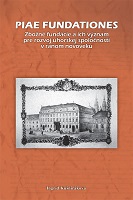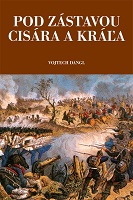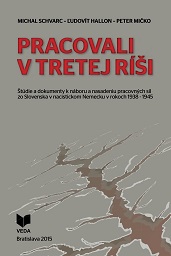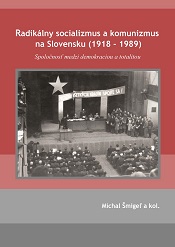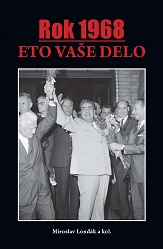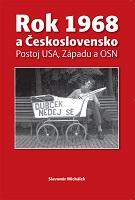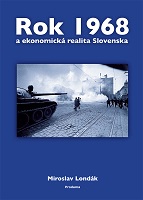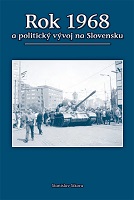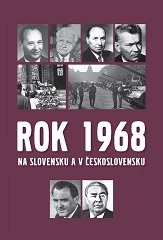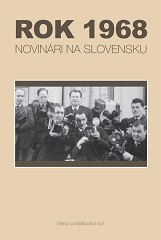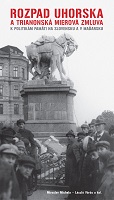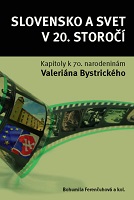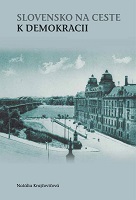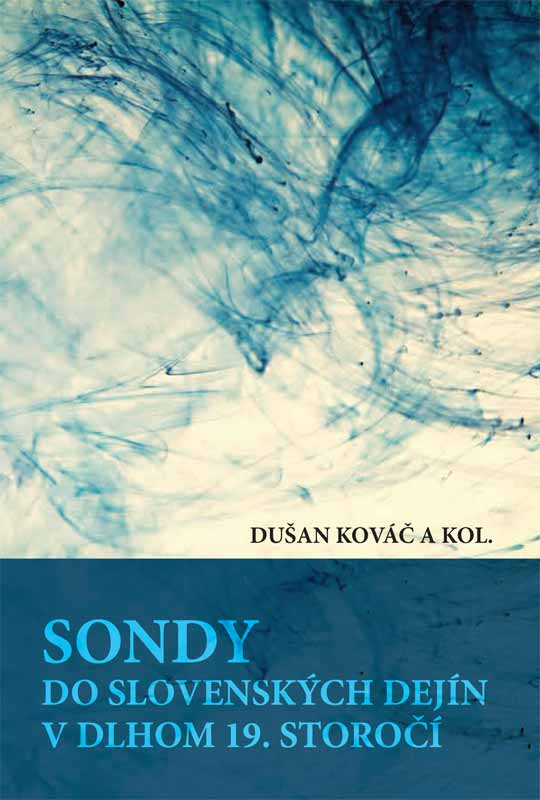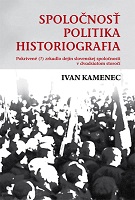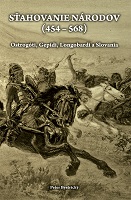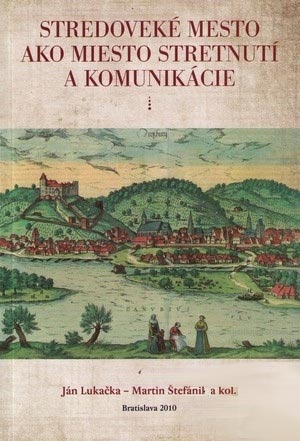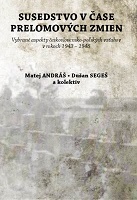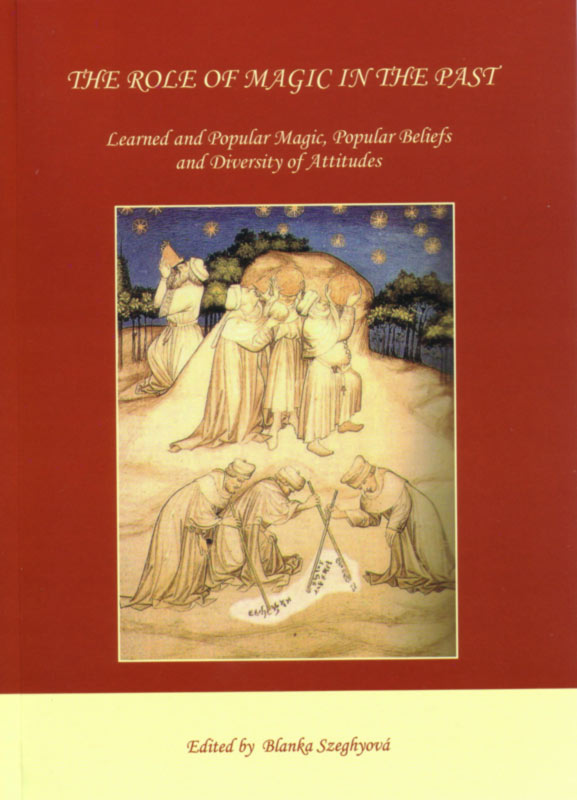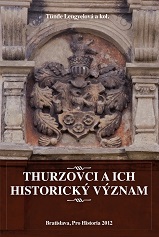Pracovali v Tretej ríši
Author(s): Michal Schvarc,Ľudovít Hallon,Peter Mičko / Language(s): Slovak,German
Keywords: Slovakia; WWII; Nazi Germany; Third Reich; documents; labour recruitment; deployment of labor;
Sie arbeiteten im Dritten Reich. Studien und Dokumente zur Anwerbung und zum Einsatz slowakischer Arbeitskräfte im Deutschen Reich 1938 – 1945 Der Slowakische Staat, seit dem 21. Juli 1939 offiziell Slowakische Republik (SR) ist sowohl in der Fach- als auch in der Laienöffentlichkeit immer wieder ein lebhaft erörtertes Thema. Ungeachtet dessen bleiben noch viele Fragen unbeantwortet, einige Problemkomplexe unberührt oder nur teilweise erforscht. Zu jenen Fragen gehört auch die Anwerbung slowakischer Arbeitskräfte nach Deutschland in den Jahren 1939 – 1945. Wenngleich es sich um ein bedeutsames Kapitel der kurzen Geschichte des Slowakischen Staates handelt, wurde es von der slowakischen Historiografie eine lange Zeit kaum reflektiert. Eine Ausnahme stellen nur einzelne Arbeiten tschechoslowakischer/slowakischer Provenienz dar. Diese behandeln jedoch nicht alle Ebenen des untersuchten Problems. Darüber hinaus orientieren sie sich fast ausschließlich an dem inländischen Schriftgut. Veranlasst durch diese Sachlage entschieden wir uns, die Anwerbung slowakischer Arbeiter nach NS-Deutschland in Form der kommentierten Quellen näher zu beleuchten, wobei den Kern der vorgelegten Edition Dokumente deutschen Ursprungs bilden, die bis jetzt unbekannt waren und noch nicht publiziert wurden. Wir haben dadurch neue Erkenntnisse zu den Zwangsformen und Methoden der Anwerbung durch nationalsozialistische Militär- und Polizeidienststellen nach Ausbruch des Slowakischen Nationalaufstandes bzw. nach dem Übergehen der Front auf das slowakische Staatsgebiet im Winter 1944/1945 sowie zur Lösung der Frage der unbezahlten Löhne in der Nachkriegszeit zutage gefördert. Wir betrachten das Phänomen zugleich als eine Art der ökonomischen Migration, dessen Katalysator eine hohe Arbeitslosigkeit in den Jahren 1939/1940 und unvergleichbar bessere Lohnverhältnisse im Reich waren. Dies erklärt die anfängliche große Nachfrage der produktiven Bevölkerung, eine Arbeitsstelle in Deutschland zu bekommen. Das Ziel des vorgelegten Werkes ist, den Stand der Kenntnisse dieser zweifellos interessanten Problematik zu erweitern. Die hier publizierten Dokumente bringen nicht nur die Auskünfte über den Anwerbungsverlauf, die Arbeits- und Lebensbedingungen slowakischer Arbeiter im Deutschen Reich, die Zahlenangeben der angeworbenen Staatsangehörigen der SR, sondern sie helfen außerdem, das Bild über die einzelnen Aspekte der politisch- wirtschaftlichen Beziehungen zwischen dem Slowakischen Staat und der deutschen „Schutzmacht“ abzurunden. Auf alle mit diesem Thema zusammenhängenden Fragen kann die Edition allerdings nicht entsprechende Antworten geben. Die Gründe dafür sind vielschichtig: Umfang des Forschungsgegenstandes, Zerstreuung des Archivguts, dessen Unvollständigkeit sowie eine ständige finanzielle Vernachlässigung der slowakischen Wissenschaft. Auf der anderen Seite soll diese Edition als eine Basis für weitere Nachforschung der Problematik dienen. Die Beziehungen zwischen der Slowakischen Republik und derer „Schutzmacht“ – dem Deutschen Reich – gestalten sich 1939 – 1945 vor allem auf zwei Ebenen: auf politischer und wirtschaftlicher. Die Anwerbung slowakischer Arbeitskräfte nach Deutschland während des Zweiten Weltkrieges stellt einen Schnittpunkt beider Ebenen dar. Es handelte sich dabei nicht um rein ökonomische Angelegenheiten und die Werbung slowakischer Staatsbürger war auch stark politisch gefärbt, insbesondere als Ferdinand Ďurčanský 1939 – 1940 die Posten des Außen- und Innenministers innehatte. Ihre politische Implikationen verlor sie späterhin auch nicht, als die slowakische Seite, insbesondere nach Übergehen Italiens ins Lager der Alliierten im Herbst 1943 sowie den verheerenden Niederlagen der Wehrmacht an der Ostfront im Frühjahr und Sommer 1944 versuchte, ihre Vertragsverpflichtungen gegenüber dem „Schutzherrn“ dilatorisch zu behandeln. Man muss sagen, dass es nur bei den Versuchen blieb und die Deutschen besaßen noch immer viele wirksame Schalthebel, um zu erreichen, was ursprünglich vereinbart wurde. Nach dem Ausbruch des Aufstandes wurde die Anwerbung bzw. die zwangsläufige Rekrutierung der Arbeitskräfte zum puren Politikum. Den höchsten Regimevertretern sowie den Staatsbehörden ist trotz Interventionen, die nur in vereinzelten Fällen zum Erfolg führten, nichts übriggeblieben, als ohnmächtig ansehen zu müssen, wie die nationalsozialistischen Militär- und Polizeidienststellen eigenmächtig die arbeitsfähige Bevölkerung manipulierten und ganze Gruppen von Bürgern außerhalb des Staatsgebiets abtransportierten. Die Slowakische Republik war weder einziger, noch ausschließlicher Lieferant billiger Arbeitskräfte in das NS-Deutschland. Die zuständigen Behörden des Dritten Reiches mussten sich mit diesem Problem schon seit 1936 auseinandersetzten, als sich der Mangel an Arbeitskräften praktisch in allen Wirtschaftszweigen, insbesondere in Landwirtschaft und Schwerindustrie, zeigte. Den Ausgang aus der unerfreulichen Lage bot die Rückkehr zu einem schon bewährten Instrument: zu den bilateralen Staatsverträgen, die bis zum Beginn der Wirtschaftskrise Anfang der 1930-er Jahre auch selbst von Deutschland abgeschlossen wurden. Wiederaufgenommene Anwerbung in der Tschechoslowakei und in Polen (1935, 1937) sowie die Vereinbarungen mit Italien (1937), mit der Tschecho-Slowakei, mit Bulgarien und Jugoslawien (1939) konnten die aufgerissenen Lücken auf dem Arbeitsmarkt nicht schließen. Eine Wende in dieser Hinsicht trat nach der Besetzung der „Rest-Tschechei“ im März 1939 bzw. nach dem Beginn des Zweiten Weltkrieges ein. Das Phänomen der Zwangsarbeit wurde einer der symptomatischen Züge der deutschen Okkupationspolitik. Sie wurde durch eine gewaltsame Verschleppung aus der Heimat, Deportation ins Deutsche Reich und unfreiwilligen Arbeitseinsatz unter schlechten, sogar menschenunwürdigen Arbeits- und Lebensbedingungen (Polen, sog. „Ostarbeiter“ und seit Herbst 1943 italienische Militärinternierte) charakterisiert. Von den insgesamt 13,5 Millionen der angeworbenen, inhaftierten und verschleppten ausländischen Zivilarbeiter, Kriegsgefangenen sowie KZ-Häftlingen kann 80-90 % als zwangsläufig eingesetzt betrachtet werden. Obwohl das NS-Deutschland einen faktisch uneingeschränkten Zugang zum Arbeitskräftereservoir der besetzten Gebiete hatte (zuständige Behörden konnten jedoch die vakant gewordenen Arbeitsplätze nicht füllen und seit Ende 1941 kämpfte die Verwaltung mit einem brennenden Defizit an Arbeitskräfte), nutze es weiter die Ressourcen seiner Verbündeten und Satelliten. Je stärker das Land politisch und wirtschaftlich mit dem Reich verbunden wurde, desto leichter war es für Berlin, von seinen Vertretern die Zugeständnisse im Sinne der eigenen Interesse zu erzwingen. Als ein exemplarisches Beispiel dafür dienen die Slowakei und Kroatien – die Staaten, die als Nebenprodukte der expansiven deutschen Außenpolitik entstanden sind. Der Slowakischen Republik, wenn wir die Zahl der Bevölkerung insgesamt in Erwägung ziehen, gehörte in der Lieferung von Arbeitskräften nach Deutschland unter dessen Verbündeten aus Südosteuropa (Ungarn, Rumänien, Bulgarien, Kroatien) bis in die Hälfte 1944 der erste Rang. Dies wurde nicht nur durch den oben erwähnten diplomatischen Druck, sondern auch durch andere Umstände hervorgerufen: durch die anfänglich hohe Arbeitslosigkeit, unvergleichbar bessere Lohnverhältnisse, Bevorzugung der deutschen Minderheit bei der Anwerbungsaktionen und nicht zuletzt durch die Bereitschaft des Regimes, mit der „Schutzmacht“ zu kollaborieren. Man kann auch die Tendenzen des Regimes nicht außer Acht lassen, die eigene Bevölkerung dazu zu zwingen, sich „freiwillig“ anwerben zu lassen. Jene Neigungen wurden erst später spürbar, als unter dem Eindruck des Luftkrieges über Deutschland, der eine rapide Verschärfung der Arbeitsund Lebensbedingungen zur Folge hatte und der Großteil der Arbeiter die Rückkehr nach Deutschland ablehnte. Die angeführten Aspekte machen aus der Anwerbung slowakischer Arbeitskräfte ein, historisch gesehen, einziehendes Thema, wenn auch die vorgelegte Quellenedition nicht alle angeschnittenen Fragen beantworten kann. Im Gegensatz zur slowakischen Geschichtsschreibung ist die Problematik der Heranziehung ausländischer Arbeitskräfte (in erster Reihe die Problematik der Zwangsarbeit) in das NSDeutschland international, insbesondere in der deutschen Geschichtsschreibung viel stärker reflektiert. Das Ergebnis dieses Interesses ist eine große Anzahl von Monographien und Sammelbänden, die sich mit (gewaltsamer) Einschaltung der Ausländer in den Arbeitsprozess, nicht nur aus einer Gesamtperspektive, sondern auch in den einzelnen, vom Reich kontrollierten Regionen oder Betrieben befassen. Die Slowakei taucht in diesen Werken nur selten, überwiegend mit faktografischen Ungenauigkeiten auf. Dennoch ist es notwendig, sich mit den neuen methodologischen Trends vertraut zu machen, sich von ihnen inspirieren zu lassen und versuchen, die eingewurzelten Stereotype in der westeuropäischen Historiographie durch die Projizierung des Themas in einem breiteren Zusammenhang, womöglich auf internationales Forum, abzuschaffen. Die von uns vorgelegte Edition kann dieses Versäumnis nicht nachholen, sondern nur zum Teil kompensieren. Einer der Gründe, warum die Anwerbung slowakischer Arbeitskräfte nach Deutschland in der ausländischen Fachliteratur kaum beachtet wird, ist das Fehlen von bedeutsamen Angaben in den primären Quellen der Zentralstellen, die für den »Arbeitseinsatz« ausschlaggebend zuständig waren (Reichsarbeitsministerium, der Generalbevollmächtigte für den Arbeitseinsatz – GBA, Deutsche Arbeitsfront – DAF, Reichssicherheitshauptamt – RSHA). Die zahlenmäßigen Daten sind zwar in den mehrmals im Jahr erscheinenden statistischen Zusammenstellungen Arbeitseinsatz für das Großdeutsche Reich vorhanden, auf die Umstände der Anwerbung von Slowaken stößt man in den Akten der oben erwähnten Behörden nur selten auf. Außer der bilateralen Vereinbarungen aus den Jahren 1939, 1941, 1943 und der Abmachung über die Gastmitgliedschaft slowakischer Staatsangehöriger in der DAF, tritt die Slowakei in Dokumenten größter Relevanz nicht in Erscheinung. Das RSHA hat z. B. keine speziellen Richtlinien über die Behandlung slowakischer Arbeitskräfte ausgearbeitet. Fritz Sauckel als Generalbevollmächtigter für den Arbeitseinsatz (die Dienststelle begann ihre Tätigkeit im April 1942) hat in den Besprechungen mit den zuständigen Stellen dieses Problem nicht explizit behandelt und betrachtete es als einen Bestandteil des umfassenden Programms der Ausländeranwerbung. Die Slowakei fiel meist unter die Rubrik „sonstige europäische Länder“, man sprach über sie nur allgemein im Zusammenhang mit verstärkter „Mobilisierung von Arbeitskräften in den besetzten Gebieten und in den befreundeten Staaten“ und mit der Rekrutierung „in den Ländern, in denen keine Kampfhandlungen stattfinden… (Dänemark, Protektorat, Ungarn, Slowakei)“. Interne Korrespondenz des Auswärtigen Amtes und das Schriftgut der Dienststelle des Beauftragten des Reichsarbeitsministers, seit 1942 des GBA in Bratislava wurden kaum berücksichtigt. Gerade die nicht komplexe Bearbeitung der Formen der Anwerbung in den verbündeten Ländern Südosteuropas seitens der westeuropäischen Geschichtsschreibung kann man als einen weiteren Grund der Nichtwahrnehmung der Slowakei in diesem Zusammenhang nennen. Dies gilt sowohl für die westeuropäische Geschichtsschreibung als auch für die Historiographie in der betreffenden Region. Der dritte, nicht weniger wichtige Grund, ist das geringe Interesse der slowakischen Historiographie an der Problematik. Obwohl die Anwerbung einen nicht unerheblichen Teil der produktiven Population der damaligen Slowakischen Republik betraf, sind, wie bereits erwähnt , bislang nur zwei relevante Werke geschrieben worden, die im Ausland keinen Niederschlag gefunden haben. Darüber hinaus wurde das Thema von keinem einzigen slowakischen Historiker auf der internationalen Bühne bekannt gemacht, und so konnte es kaum ins Bewusstsein ausländischer Wissenschaftler gelingen. Die vorgelegte Quellenedition enthält 152 Dokumente zur Problematik der Anwerbung slowakischer Arbeitskräfte nach Deutschland zwischen den Jahren 1939 und 1945. Weitere, deren Relevanz wir nicht für so überragend hielten bzw. die mit den Grunddokumenten direkt zusammenhängen, wurden im Rahmen des Fußnotenapparats komplett oder auszugsweise publiziert. Alle Dokumente sind amtlicher Provenienz. Ein Großteil von ihnen ist als Schriftgut der deutschen zentralen Staats- und Parteibehörden sowie der in der Slowakei tätigen Dienststellen überliefert worden. Es handelt sich vor allem um die Berichte des Beauftragten des Reichsarbeitsministeriums, seit Frühjahr 1942 des Generalbevollmächtigten für den Arbeitseinsatz in Bratislava, ergänzt durch interne Korrespondenz des Auswärtigen Amtes (Berichte und Telegramme der deutschen Gesandtschaft in Bratislava und der Berliner Zentrale in Wilhelmstraße 74-76). Einige Dokumente stammen vom RSHA, von der Dienststelle des Sonderbeauftragten des Reichsführers-SS und Chefs der deutschen Polizei bei der deutschen diplomatischen Mission in der Slowakei, vom SD-Leitabschnitt in Wien, von dem Berater für soziale Fragen bei slowakischer Regierung, Albert Smagon, von der Einsatzgruppe H der Sicherheitspolizei und des SD und vom Befehlshaber der Sicherheitspolizei und des SD in der Slowakei. Den zweiten Teil bilden die Akten slowakischer Behörden, in erster Reihe des Innenministeriums – Zentralarbeitsamt, des Außenministeriums (Zentrale, Berliner Gesandtschaft und Wiener Generalkonsulat), des Regierungspräsidiums, des Generalsekretariates der Slowakischen Volkspartei Hlinkas u. a. Die dritte, am wenigsten vertretene Gruppe der Quellen stellen die Dokumente tschecho-slowakischer/ tschechoslowakischer Provenienz der Jahre 1938 – 1939 bzw. der Nachkriegszeit dar. Vom thematischen Blickpunkt aus gesehen, beschäftigt sich der Großteil der publizierten Quellen mit dem Verlauf der Rekrutierung slowakischer Arbeitskräfte nach Deutschland. Von weiteren Problembereichen können Lohntransfer, Arbeits- und Lebensbedingungen angeworbener Arbeiter genannt werden. Als eine besondere Gruppe sind die Dokumente, welche die Zwangsanwerbung nach dem Ausbruch des Slowakischen Nationalaufstandes bzw. nach der Erklärung eines Teils der Slowakei zum Operationsgebiet der Wehrmacht beleuchten, anzugeben. Dieses Thema wurde bisher von der slowakischen Historiographie noch nicht thematisiert. Dasselbe gilt auch für die Kompensierung für die nicht bezahlten Löhne, welche das Nachkriegsregime der gesteuerten Demokratie sowie nach dem Februarumsturz 1948 die Kommunisten lösen mussten. Wir haben in die Edition auch einige Dokumente allgemeiner Natur eingereiht. Sie weisen nicht nur auf eine differenzierte Behandlung der »fremdvölkischen« Arbeitskräfte durch polizeiliche Behörden, sondern auf das Bemühen des NS-Regimes, die Anwerbung der Arbeiter aus den Ländern Südosteuropas im gemeinsamen „Kampf gegen Bolschewismus“ propagandistisch auszuwerten, hin. Manche partielle Probleme, wie beispielsweise die Frage des Arbeitseinsatzes internierter Angehöriger der sog. ostslowakischen Armee, die Frage der Gerichtsbarkeit gegenüber slowakischen Staatsbürgern, Arbeits- und Lebensbedingungen an einzelnen Arbeitsplätzen, die Haltung lokaler staatspolizeilichen Dienststellen gegenüber den Slowaken usw. konnten in die Edition nicht einbezogen werden. Die zugeteilten Geldmittel im Rahmen des Projektes haben einfach nicht dazu gereicht, um überhaupt zu den hier angeschnittenen Fragen Forschung einzuleiten. Die Herausgeber haben bei der Untersuchung zum Thema das Augenmerk auf zentrale Archive in der Bundesrepublik Deutschland gerichtet. Die Recherchen im Politischen Archiv des Auswärtigen Amtes in Berlin konzentrierten sich in erster Reihe auf das überlieferte Schriftgut der Gesandtschaft Preßburg. Zwei Pakete (75 und 208) dieses Archivbestandes umfassen Akten zur Anwerbung slowakischer Arbeitskräfte nach Deutschland. Es handelt sich um die bereits erwähnten Berichte des Beauftragten des Reichsarbeitsministeriums bzw. des GBA sowie der Gesandtschaft. Es ist ein unvollständiges Material (Kopien und Abschriften dieser Dienststelle), welches trotz dieser Tatsache ein tragfähiges Gerüst der Edition bildet. Darüber hinaus wurden weitere Bestände gesichtet: Konsulat Preschau, Handelspolitische Abteilung – Handakten Wiehl, Waldern, Kulturpolitische Abteilung, Referat Partei, Referat Inland II geheim und Rechtsabteilung. Dort wurden keine slowakeibezogene Schriftstücke gefunden. Wir haben auch einige allgemeinen Dokumente zum Thema Arbeitseinsatz der Bevölkerung aus Südosteuropa im Reich in die Edition eingefügt. Im Bundesarchiv in Berlin zeigten sich R 70 Slowakei – Polizeidienststellen in der Slowakei und die Mikrofilmesammlung SS Verschiedener Provenienz als relevante Bestände. Dort sind Berichte verschiedener SD-Dienststellen über die Lage slowakischer Arbeiter in Deutschland, über die Entstehung ausländischer Hlinka-Garde sowie ein Material zur zwangsläufigen Rekrutierung slowakischer Bevölkerung im Herbst 1944 und im Winter 1944/1945 überliefert worden. Nützliche Hinweise zum Thema geben auch die Bestände R 3901 – Reichsarbeitsministerium, R 16 – Reichsnährstand und R 3601 – Reichsministerium für Ernährung und Landwirtschaft. Fehlende Schriftstücke der Dienststelle des Beauftragten des Ministeriums, später des GBA haben wir in der Registratur jedoch nicht gefunden. Als weitere Bestände, aus welchen wir Dokumente schöpften, sind anzuführen: NS 18 – Reichspropagandaleiter der NSDAP, NS 19 – Persönlicher Stab Reichsführer-SS, R 2 – Reichsfinanzministerium, R 59 – Volksdeutsche Mittelstelle, R 901 – Auswärtiges Amt, Handelspolitische Abteilung 1936 – 1945 und R 5101 – Reichsministerium für die kirchlichen Angelegenheiten. Gesichtet wurden sowohl R 3 – Reichsministerium für Rüstung und Kriegsproduktion, R 43 – Reichskanzlei »Neue Reichskanzlei« als auch R 3101 – Reichswirtschaftsministerium. Recherchearbeit in diesen Beständen hat kein nennenswertes Ergebnis gebracht. Infolgedessen haben wir noch einige ergänzende Recherchen im Institut für Zeitgeschichte in München sowie in Wien durchgeführt. Für Forschungsarbeiten in den Landes-, Staats- und Betriebsarchiven in Deutschland sowie in Österreich hatten wir nicht genug Geldmittel zur Verfügung. Slowakische Archive bieten für „unser“ Thema verhältnismäßig große Anzahl des Schriftguts an. Im Vergleich zu den Quellen deutscher Provenienz müssen wir jedoch feststellen, dass es sich vorwiegend um die Dokumente geringer Relevanz handelt. Nur in seltenen Fällen stießen wir auf sich periodisch wiederholende analytische Berichte, tiefgehende Expertisen oder Denkschriften. Darüber hinaus sind die Akten lückenhaft und verstreut in mehreren Archiven sowie Beständen. Die ausführlichste Forschung haben wir selbstverständlich im Slowakischen Nationalarchiv in Bratislava absolviert. Als die wichtigsten Bestände können wir in dieser Hinsicht Úrad predsedníctva vlády (Amt des Regierungspräsidiums) 1938–1945, Ministerstvo zahraničných vecí (Miniterium des Äußern) 1939–1945, Ministerstvo vnútra (Ministerium des Innern) 1938–1945, Ministerstvo financií (Ministerium der Finanzen) 1939-1945 bezeichnen. Dort ist das bedeutendste Material slowakischer Provenienz konzentriert. Die Recherchen beschränkten sich nicht nur auf diese Bestände. Gesammelte Dokumente haben wir durch die Forschung in Registraturen von Ministerstvo hospodárstva (Wirtschaftsministerium) 1938–1945, Povereníctvo financií (Beauftragter für das Finanzwesen)1945–1960, Úrad obžalobcu pri Národnom súde (Amt des Staatsanwaltes beim Nationalgericht) 1945– 1948, Hlinkova garda (604), Ministerstvo pravosúdia (Justizministerium) 1938–1945, Archív kancelárie prezidenta republiky Praha (Archiv der Kanzlei des Präsidenten der Republik Prag) und a Kancelária prezidenta republiky (Kanzlei des Präsidenten der Republik) 1939–1945 ergänzt. Die Akten aus diesen Archivbeständen bilden die Basis des slowakischen Teils der Edition. Die Recherchen im Archiv der Nationalbank der Slowakei, im Nationalarchiv der Tschechischen Republik, im Archiv des Außenministeriums der Tschechischen Republik sowie im Staatsarchiv in Banská Bystrica hatten ausschließlich einen aufklärenden Charakter. Einen Bruchteil der durchgesehenen Materie haben wir in der Edition entweder als Dokumente, oder als Hilfsmaterial in den Fußnoten verwendet. Die Nachforschung in den Registraturen von einzelnen Arbeitsämtern in Staatsarchiven sowie eine eventuelle Umfrage unter den noch lebenden Zeitzeugen wurden wegen Mangels an finanziellen Mittel nicht durchgeführt. Die Publikation stellt ein Endergebnis des dreijährigen Projektes (2009 – 2012) VEGA der Slowakischen Akademie der Wissenschaften (SAW) und des Schulministeriums der Slowakischen Republik Nr. 2/0090/10 Wirtschaftliche Migration in der Slowakei in den Jahren 1939 – 1945, an welchem die wissenschaftlichen Mitarbeiter des Historischen Instituts der SAW und des Lehrstuhls für Geschichte der Fakultät der Geisteswissenschaften in Banská Bystrica zusammenarbeiteten.
More...
